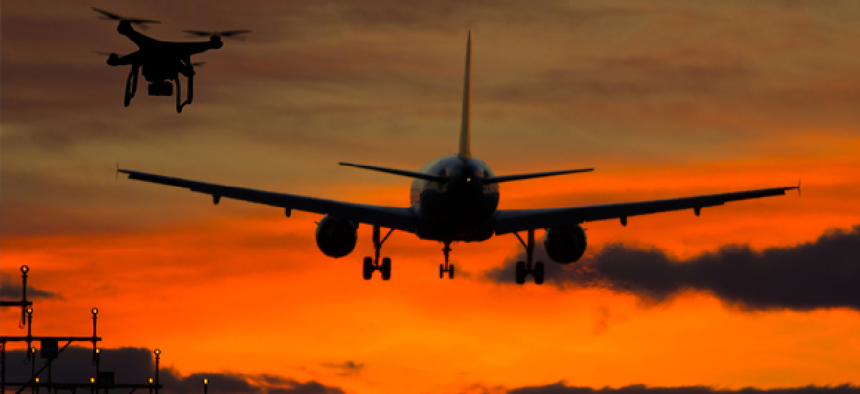DHS tests counter-drone tech

The Department of Homeland Security is testing counter-drone systems near agency facilities and ports, according to a recently released privacy impact assessment.
The Department of Homeland Security is testing counter-drone systems near agency facilities and ports of entry to gather information about how drug smugglers and other criminal organizations use drones and how Border Patrol can respond. Additionally, the tests designed to inform Border Patrol training and to evaluate existing unmanned aerial systems technologies.
A privacy impact assessment (PIA) dated July 15 and released by DHS July 24 evaluates measures to mitigate privacy risks and the release of personally identifiable information during counter-UAS testing, evaluation and operational deployment. The federal government is increasingly concerned with the flood of small drones into the commercial market, some of which could be used in menacing ways. The DHS PIA cited the 2018 incident at London's Gatwick International Airport in which a drone harassing commercial flight operations resulted in 1,000 flights diverted or cancelled at the facility over three days.
DHS’ Science and Technology Directorate is leading testing efforts across the agency,
C-UAS technologies are designed to detect, track, identify and neutralize drones through a variety of technologies including radar, passive RF or electronic surveillance measures, electro-optical and infrared cameras, perimeter alert systems as well as acoustic sensors, according to a September 2019 S&T National Urban Security Technology Laboratory (NUSTL) report. The effectiveness of a particular C-UAS measure depends on a number of parameters such as range, frequency, geolocation capabilities, scan rates, direction finding and image resolution, it said.
There are two basic types of C-UAS technology: electronic, which emit RF signals to jam, spoof or interfere with communication signals, and kinetic, which involve remove or reduce the risks posed by a drone by some form of direct physical action, such as launching specialized projectiles or nets, firing laser weapons or countering with larger UAS, the NUSTL report said.
DHS outlines privacy risks of the counter-drone technology testing, noting that while inadvertent or incidental capture of personally identifiable information is possible in counter-drone technology testing, it "is usually unlikely due to the angle and focus of the camera technologies being used."
DHS and its components, said the PIA, will assess anti-drone technologies at agency test and evaluation sites, such as national laboratories, government-owned and operated test ranges, other DHS-developed test sites, component areas of responsibility, DHS facilities, or other covered assets which could include airports, including airports and federal facilities.
Those tests, said the document, aren't looking to collect personal data from bystanders or surrounding areas. It said it plans to post signs and mark test areas where they bump against public areas, as well as label detour routes around test sites so people can avoid them.
Despite the caution, DHS conceded a "remote possibility" that counter drone systems could capture images with PII as it monitors airspace or pans cameras to follow a potential threatening aircraft. It also said acoustic sensors on the systems might inadvertently overhear human audio, "such as an outdoor conversation."
DHS said the Science and Technology Directorate wouldn't would store retain, or otherwise use inadvertently exposed PII, but noted that such data could be retained in the course of a law enforcement agency's investigation.
This article was first posted to FCW, a sibling site to GCN.





